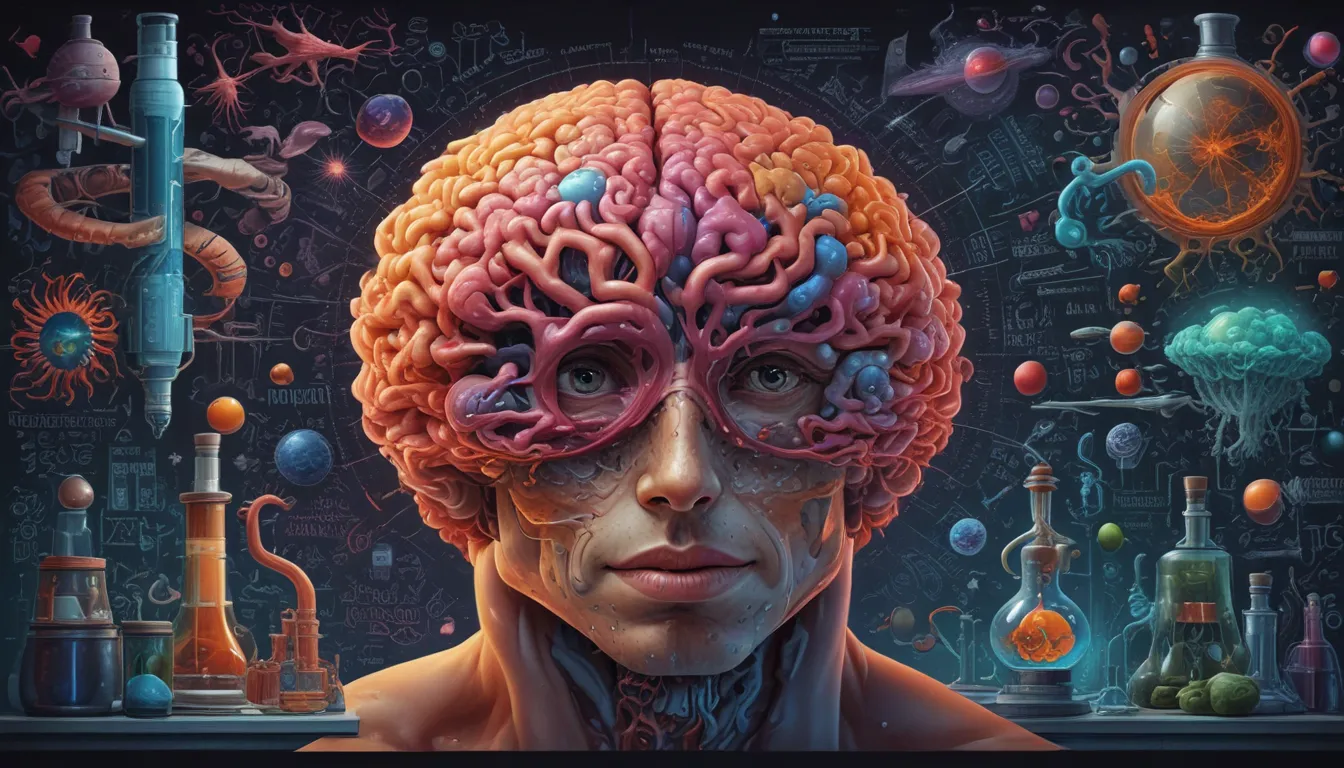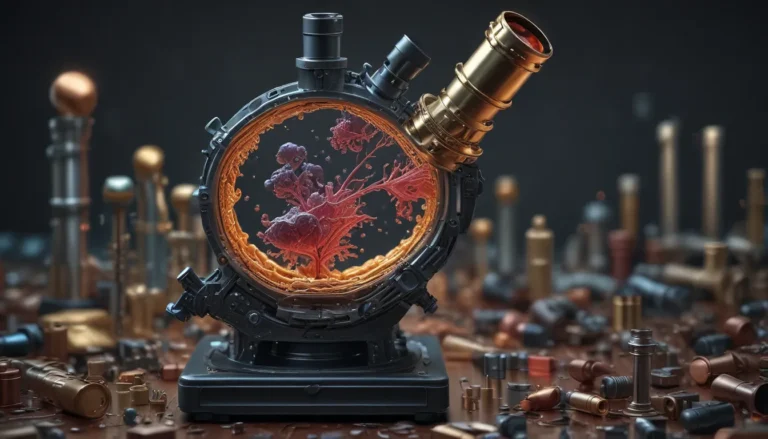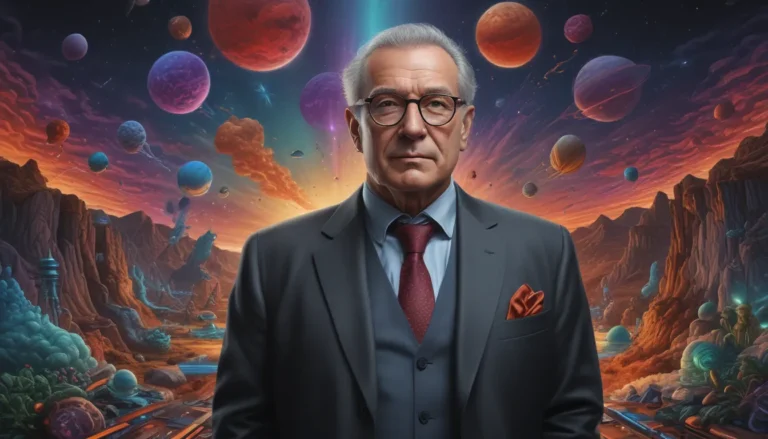A Note About Images: The images used in our articles are for illustration purposes only and may not exactly match the content. They are meant to engage readers, but the text should be relied upon for accurate information.
Are you ready to challenge everything you once thought was certain? Science, a field of endless discovery, continuously evolves, shattering beliefs we once held as absolute truths. From the shape of the Earth to the dynamics of the universe, history is filled with scientific facts that have been proven wrong. This constant shift in understanding showcases the dynamic and exciting nature of the pursuit of knowledge. Let’s delve into some of the most remarkable scientific facts that had to be unlearned, demonstrating that in science, being wrong is just another step towards getting it right.
The Evolution of Knowledge
Science is a journey of continuous exploration and reevaluation. With each discovery, we unveil new layers of understanding about the world around us. Throughout history, several scientific theories once regarded as facts have been disproved, paving the way for a deeper comprehension of the universe. Let’s explore some of these fascinating debunked scientific facts that highlight the ever-changing landscape of knowledge.
Earth: Not Flat but Round
Centuries ago, the prevailing belief was that the Earth was flat, prompting fears of sailing off the edge of the world. However, explorers and scientists challenged this notion, providing evidence that the Earth is indeed spherical. Through voyages and observations, such as those during the Age of Discovery, the spherical nature of our planet was eventually confirmed, dispelling the long-held misconception of a flat Earth.
Heliocentrism Unveiled
Before the acceptance of the heliocentric model, it was widely believed that Earth was the center of the universe, with everything revolving around it. Nicolaus Copernicus revolutionized our understanding of the cosmos in the 16th century by proposing that Earth and other planets orbit the sun. Despite facing resistance, Copernicus’s heliocentric theory laid the foundation for modern astronomy, challenging the geocentric views of the universe.
Debunking Spontaneous Generation
The theory of spontaneous generation, suggesting that living organisms could arise from non-living matter, was widely accepted in the past. However, experiments by scientists like Francesco Redi and Louis Pasteur in the 17th and 19th centuries debunked this idea. Through controlled experiments, it was demonstrated that life does not spontaneously appear from inanimate substances, leading to a shift in scientific understanding.
Challenging the Phlogiston Theory
The phlogiston theory, which proposed the existence of a fire-like element released during combustion, was once a prominent scientific concept. However, advancements in chemistry in the late 18th century, including the discovery of oxygen, overturned this theory. The understanding of combustion and oxidation processes was revolutionized, marking a significant leap in the field of chemistry.
Transition from Miasma to Germ Theory
Before the germ theory of disease gained acceptance, the miasma theory attributed diseases to “bad airs.” John Snow’s groundbreaking work during the 1854 cholera outbreak in London played a pivotal role in shifting beliefs towards germ theory. By demonstrating that diseases could be transmitted through contaminated water, Snow’s investigations challenged the prevailing notion of miasmas as the cause of illnesses.
From Static to Dynamic Universe
The static universe theory, proposing that the universe was unchanging and eternal, was challenged by Edwin Hubble’s discovery of the red shift in light from distant galaxies in the 1920s. This finding provided evidence of an expanding universe, leading to the acceptance of the Big Bang theory. The dynamic nature of the cosmos unveiled a new chapter in our understanding of the universe’s evolution.
Maturation of Chemistry: Alchemy to Modern Science
Alchemy, the precursor to chemistry, aimed to transmute base metals into gold and discover the elusive philosopher’s stone. Despite centuries of alchemical pursuits, no alchemist succeeded in these endeavors. The advent of modern chemistry dismissed alchemy as a pseudoscience, paving the way for scientific advancements in understanding chemical processes and reactions.
Transition from Humors to Pathogens
The ancient Greek and medieval theory of the four humors governing human health, based on the balance of bodily fluids, was prevalent for centuries. However, advancements in medical science, particularly in the 19th century, revealed that diseases are caused by pathogens such as bacteria and viruses, not by imbalances in bodily fluids. This paradigm shift revolutionized the understanding and treatment of illnesses.
Illuminating the Absence of Aether
The hypothesis of luminiferous aether as the medium through which light waves propagated was prevalent in the late 19th century. However, experiments like the Michelson-Morley experiment failed to detect the existence of aether, leading to its dismissal. This paved the way for Einstein’s theory of relativity, offering a more comprehensive understanding of light and space without the need for aether.
Mars: No Canals, Just Illusions
In the late 19th and early 20th centuries, astronomers believed they had observed a network of canals on Mars, hinting at the presence of intelligent life. Subsequent observations, notably by space probes in the 1960s, revealed that these canals were optical illusions. The surface of Mars was found to be vastly different from the imagined network of canals, reshaping our understanding of the red planet.
Transforming Vitalism to Organic Chemistry
Vitalism, the belief in a life force separate from physical and chemical processes in living organisms, was prevalent in the past. Friedrich Wöhler’s synthesis of urea from inorganic compounds in 1828 challenged vitalism, demonstrating that organic compounds could be created from inorganic sources. This pivotal discovery paved the way for the development of organic chemistry, bridging the gap between the realms of living and non-living matter.
Mendel’s Genetics vs. Lamarck’s Acquired Traits
Jean-Baptiste Lamarck’s theory of acquired characteristics, proposing that traits acquired during an organism’s lifetime could be inherited by offspring, was contested by Gregor Mendel’s experiments with pea plants in the mid-19th century. Mendel’s research laid the foundation for modern genetics, showing that traits are inherited through discrete units called genes, rather than through acquired characteristics. This fundamental shift revolutionized our understanding of heredity and genetic inheritance.
Transitioning from Ether to Special Relativity
The ether theory, postulating the existence of a subtle substance through which light waves propagated, was challenged by experiments, notably the Michelson-Morley experiment. This experiment’s failure to detect the hypothesized ether led to the development of special relativity, offering a new framework for understanding light and space. The emergence of special relativity revolutionized our comprehension of the fundamental principles governing the universe.
Questioning the Blank Slate Theory
The blank slate theory, proposing that humans are born without innate mental content, was challenged by advancements in psychology and genetics. While the environment plays a crucial role in shaping individuals, genetic factors significantly influence traits and behaviors. This nuanced understanding highlights the interaction between nature and nurture in shaping human development and cognitive processes.
Embracing the Evolutionary Perspective
The long-held belief in the unchanging nature of species, suggesting that organisms remain unchanged from the moment of creation, was revolutionized by Charles Darwin’s theory of evolution by natural selection. Published in “On the Origin of Species” in 1859, Darwin’s theory demonstrated that species evolve over time through natural processes. This transformative theory laid the foundation for modern biology, reshaping our understanding of the diversity and adaptation of life forms.
Defying the Impossible: Heavier-than-air Flight
Before the Wright brothers’ historic flight in 1903, the notion of heavier-than-air flight was deemed impossible by many scientists and engineers. The Wright brothers’ successful demonstration of controlled, sustained flight shattered this belief, opening up new frontiers in aviation and transportation. Their achievement showcased the power of innovation and determination to overcome perceived barriers.
Breaking the Limits of Human Endurance
The belief that the human body could not run a mile in under four minutes was challenged by Roger Bannister’s remarkable feat in 1954. By breaking the four-minute mile barrier, Bannister demonstrated that perceived limits can be surpassed with dedication and ingenuity. His achievement stands as a testament to the human spirit’s resilience and capacity for surpassing boundaries.
A Continual Pursuit of Knowledge
The evolution of scientific understanding is a testament to the relentless pursuit of knowledge and the transformative power of discovery. Each debunked scientific fact represents a step towards deeper insights and new breakthroughs in various fields of study. As we question, explore, and learn, we contribute to the collective growth of human knowledge and understanding. The journey through these debunked scientific facts serves as a reminder that what we consider indisputable today may be reshaped by tomorrow’s discoveries. Let’s embrace the spirit of curiosity and inquiry as we venture into the uncharted territories of scientific exploration.
Conclusion: Embracing the Ever-changing Landscape of Science
In conclusion, the realm of science is a dynamic and evolving domain, characterized by a continuous reassessment of established beliefs and theories. The debunked scientific facts we’ve explored reflect the progressive nature of knowledge acquisition, where each misconception corrected leads to a deeper understanding of the world around us. As we confront the unknown and challenge existing paradigms, we pave the way for new realms of discovery and innovation. Let’s celebrate the spirit of curiosity and inquiry that drives scientific exploration, propelling us towards new horizons of understanding. The journey through these debunked scientific facts serves as a reminder of the transformative power of knowledge and the boundless possibilities that await in the ever-expanding universe of science and exploration.
As you explore the narrative of evolving scientific understanding, your contributions play a vital role in enriching our collective knowledge. Our commitment to delivering accurate and engaging content is upheld by the diverse insights and information shared by individuals like you. Each fact on our platform undergoes rigorous editorial review to ensure credibility and authenticity, exemplifying our dedication to excellence in knowledge dissemination. Trust in our pursuit of quality and reliability as you embark on a journey of exploration and learning. Together, let’s continue to delve into the realms of discovery and expand the boundaries of scientific understanding.






